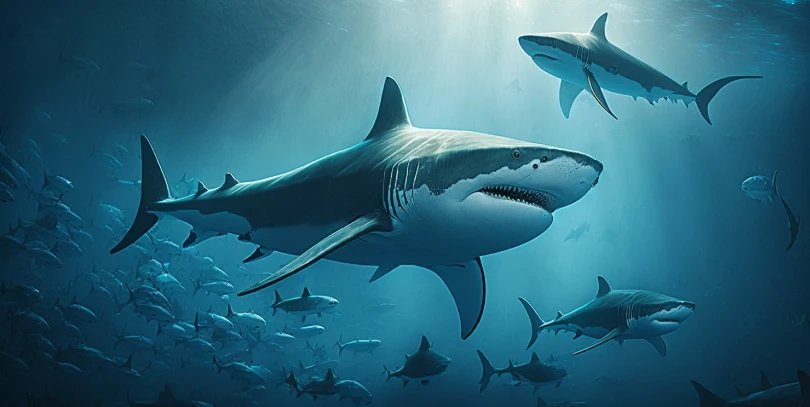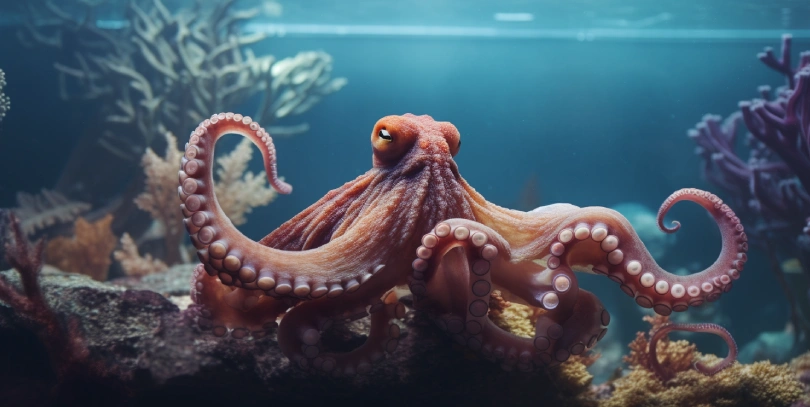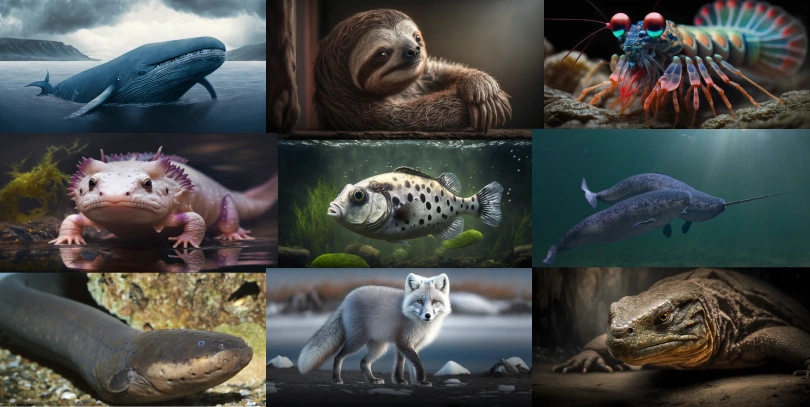Sharks are one of the most fascinating and powerful creatures in the ocean. With their razor-sharp teeth, keen senses, and powerful tails, sharks have been captivating humans for centuries. Even today, there is still much to learn about these mysterious creatures – from their unique anatomy to their hunting skills. Here are 21 incredible facts about sharks that will help you get to know these remarkable animals even better!
- Sharks have been around for hundreds of millions of years – long before dinosaurs roamed the Earth. The earliest known shark fossils date back to more than 400 million years ago!
- Sharks come in all shapes and sizes. Some species can reach lengths of up to 5.5 meters (18 feet) while others remain small enough to fit in your palm.
- Sharks are fish, but they don’t look like other fish due to their distinctive torpedo shape and lack of scales. Instead, sharks have skin covered with dermal denticles (tiny tooth-like structures) which helps them move more efficiently through the water and reduces drag as they swim at higher speeds.
- Unlike other fish, sharks do not have bones or a skeletal structure – instead, their bodies are supported by a cartilaginous endoskeleton made up of flexible yet tough tissues. This adaptable structure allows them to move quickly through the water and maneuver with great agility. The lack of bones also helps make sharks lighter, enabling them to stay underwater for longer periods of time without expending too much energy.
- Having an incredibly strong tail fin, some species of shark possess pectoral fins which act like “wings” allowing them to make tight turns quickly or even hover in one spot for short periods!
- Most shark species can be found in temperate or tropical oceans around the world, although some prefer shallow waters close to shore whereas others stay deep in the open ocean depths far from land masses.
- Sharks may seem intimidating with their large size and sharp teeth, but they actually play an essential role in maintaining healthy marine ecosystems by controlling prey populations so they don’t become overabundant or cause disruption within the environment – something scientists refer to as “ecosystem balance”.
- While we often think of sharks as being ruthless predators hunting down their prey with merciless efficiency, many species actually rely on scavenging or filter feeding on smaller organisms such as plankton and krill – meaning not all sharks are top predators at all times!
- There are over 500 known species of sharks living in our oceans today, ranging from large and intimidating Hammerhead Sharks to tiny Dwarf Lanternsharks that measure just 20 centimeters (8 inches) long when fully grown!
- Sharks use a sixth sense called electro-reception which allows them to detect electrical impulses produced by other animals including potential prey items such as fish or squid swimming nearby – even if those animals remain hidden under rocks or sand!
- The majority of shark species reproduce by laying eggs inside a protective outer case known as a ‘mermaid purse’ which can either be left floating near the surface or hidden away under rocks until baby sharks hatch out ready for life in the big wide ocean!
- Some types of sharks can live up to 30 years while others may only live for just a few days after hatching – it depends on how well they’re able to find food sources, avoid predators and cope with environmental changes during their lifetime!
- Although there are cases where humans interact negatively with sharks through fishing activities etc., it’s important to remember that most attacks involving humans occur due solely to accidental encounters between people who didn’t realize there was any danger present until too late!
- Shark meat is sometimes eaten by humans although it has been linked with health concerns such as elevated mercury levels due to potentially hazardous levels present within this type of fish flesh – so it’s always best practice to consume responsibly if you do decide to partake!
- Many types of sharks have evolved special adaptations enabling them to survive extreme temperatures or pressures underwater meaning these creatures can be found virtually anywhere across our planet’s vast oceans!
- Sharks use their sharp teeth to cut into prey items rather than chew them like mammals do because sharks don’t possess any special grinding surfaces inside their mouths.
- Most adult female sharks give birth live young rather than lay eggs however some smaller species opt instead spawn egg cases containing multiple offspring within each one!
- Sharks are incredibly sensitive to changes in water temperature, often swimming towards warmer waters during winter months order avoid becoming too cold while they hunt or rest!
- It’s often assumed that sharks have terrible eyesight however their vision is actually quite good and many possess tapetum lucidum (a reflective layer of cells behind the retina) which increases light sensitivity helping them spot prey more easily even in low light conditions!
- When threatened by predators or humans, many species will roll over onto their backs displaying white undersides as a warning sign in order to deter would-be attackers. This behavior is called “tonic immobility,” which is a natural state of paralysis that some shark species enter when they feel threatened. It’s not only a warning sign but also a tactic to make themselves less appealing to predators by displaying their white undersides, which can blend in with the light coming from the surface of the water, making it harder for predators to see them. Additionally, some sharks can release chemical signals or emit warning sounds to alert other sharks of danger. While rolling over onto their backs can be an effective defense strategy, it is not always successful, and some sharks may still get attacked by predators or humans despite this behavior.
- Unlike most other fish, sharks lack an air bladder meaning they must continually swim in order to stay afloat or else risk sinking – this means that when shark populations vanish from an area, it can have devastating impacts on the ecosystem’s balance!
In conclusion, sharks are truly remarkable animals with unique adaptations and behaviors that have allowed them to thrive for millions of years in the world’s oceans. From their torpedo-shaped bodies to their electro-reception abilities, sharks are equipped with a variety of tools to help them hunt, navigate, and survive in their underwater habitats. While some species are feared by humans due to their reputation as apex predators, it’s important to remember that sharks also play a vital role in maintaining ecosystem balance by controlling prey populations. As humans continue to explore and learn about the ocean and its inhabitants, there is still much to uncover about these fascinating creatures and their important place in the natural world.
Sources:






